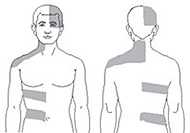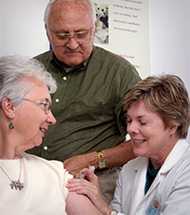Almost 1 out of every 3 people in the United States will develop shingles, also known as zoster or herpes zoster, in their lifetime. There are an estimated 1 million cases of shingles each year in this country. Anyone who has recovered from chickenpox may develop shingles; even children can get shingles. However the risk of shingles increases as you get older. About half of all cases occur in men and women 60 years old or older…
Did You Know?
Shingles is caused by the varicella zoster virus (VZV), the same virus that causes chickenpox. After a person recovers from chickenpox, the virus stays dormant (inactive) in the body. For reasons that are not fully known, the virus can reactivate years later, causing shingles. Shingles is not caused by the same virus that causes genital herpes, a sexually transmitted disease.
Want to Know More About Shingles?

Download CDC’s mobile app now!
Click “Disease of the Week,” find shingles, and take the quiz to test your knowledge!
Available on iOS, Android and Windows 8 tablets
Signs & Symptoms

- Pain, itching, or tingling of the skin followed by a painful rash of blister-like sores, usually on one side of the body, often on the face or torso
- Fever
- Headache
- Chills
- Upset stomach
Shingles Vaccination

CDC recommends that adults 60 years old or older receive one dose of the shingles vaccine. The vaccine reduces the risk of developing shingles and the complications caused by the disease.
Expert Commentary


CDC Expert Commentary – Herpes Zoster Rates Are Increasing, but Why? [4:06 mins]
Learn why the increases in shingles rates among adults are unlikely to be related to childhood chickenpox vaccination.
Released 4/14/2014
- Page last reviewed: August 19, 2016
- Page last updated: August 19, 2016
- Content source:


 ShareCompartir
ShareCompartir
